This gorgeous, jewel toned blackcurrant curd is easy to make, & a delicious addition to your brunch spread. Try it on your favourite pastry!
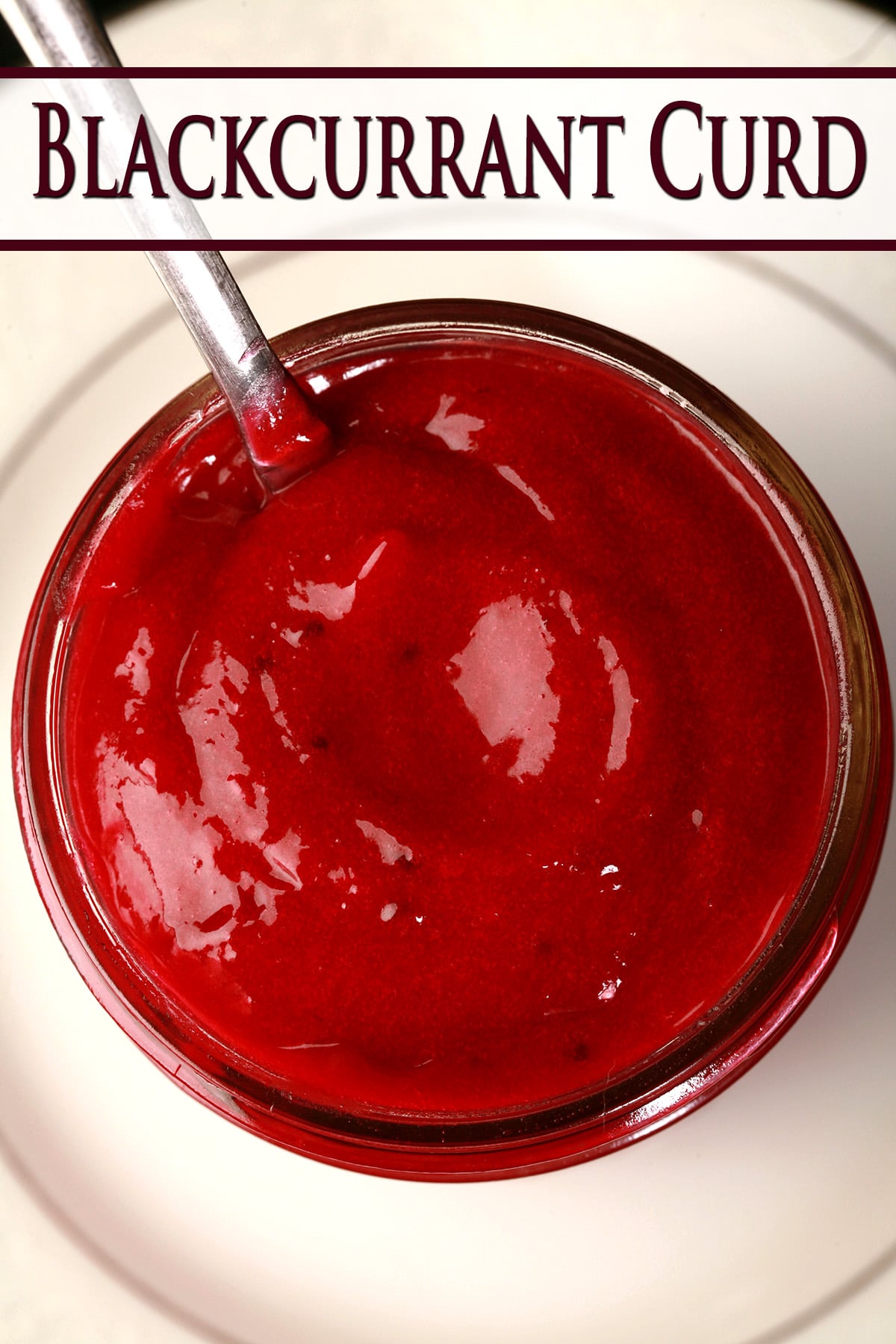
I love, love, LOVE blackcurrants.
It’s something I mostly had to go without, for the 12 years I was living in the USA. They apparently just don’t appreciate them, the way we do?
On trips home, I’d buy blackcurrant candies, drinks, whatever.
Nestea’s Blackcurrant Iced Tea was my JAM, and I’ll be forever salty that it was discontinued right before I moved home!
AUGH!
Anyway, when I went on a curd making odyssey a while back, I decided to make some blackcurrant curd at the same time.
Blackcurrant curd isn’t much of a popular thing - especially here in North America - but it’s a unique, flavour packed alternative to the more traditional curds, like lemon and lime.
It doesn’t work *quite* the same way as lemon curd does, though.
Blackcurrants need different handling, and they also have a lower acid level than lemon juice does.
You need enough acid to react with the proteins in the egg yolks, to ensure a nice, thick product. Without that, you end up with a runny curd.
Generally speaking, blackcurrant curd means either accepting a runnier curd, or supplementing the blackcurrants with some lemon juice.
Two problems:
1. The blackcurrant flavour is diluted with the flavour from the lemon.
2. The acid that the lemon juice brings is diluted with the blackcurrants... so it still doesn't set up quite as thick as lemon curd.
A while back, I was working on something completely unrelated, and had a bit of an epiphany: What if - instead of supplementing with lemon juice - I brought in additional acid in the form of citric acid?
... and it worked perfectly.
This is still a super easy recipe to make - much like traditional lemon curd.
Like lemon curd, it also requires some specifics with regards to ingredients, equipment, and technique... so let's get to it!

Uses for Blackcurrant Curd
Beyond a “just eat it with a spoon, straight from the jar”, there are many, many different uses for blackcurrant curd!
Here are a few ideas for you:
- On the breakfast table. Spread it on toast, Biscuits, scones, etc. Spoon it over waffles or pancakes (especially good when topped with berries!)
- As a filling for baked goods. Fill Macarons, Cream Puffs or Profiteroles, pre-baked tart shells, or layered cakes* with blackcurrant curd.
- Blackcurrant curd is also a great option for Butterfly Cupcakes, either instead of or in addition to frosting. When “in addition to”, I’ll spoon some curd in the cavity, then pipe frosting over it.
- Use as a topping for Pavlova. I like to do the layer of whipped cream, then the curd, and finally the fruit topping. You can even mix some into the whipped cream to flavour it. Alternately, it’s great as an offering on a Pavlova Dessert Board.
- Spoon it over ice cream, Cheesecake, or crepes.
- We like to drizzle it over yogurt that’s been topped with my Porter’s Yogurt and Ice Cream Topping.
- You can also make layered parfaits with curd and yogurt, or curd and cottage cheese.
* When filling layered cakes with curd, it’s best to pipe a ring of frosting around the outer perimeter of the layer being filled, then fill the inside of that border with the curd.
This gives some stability to the filling layer, and will prevent the curd from oozing out.
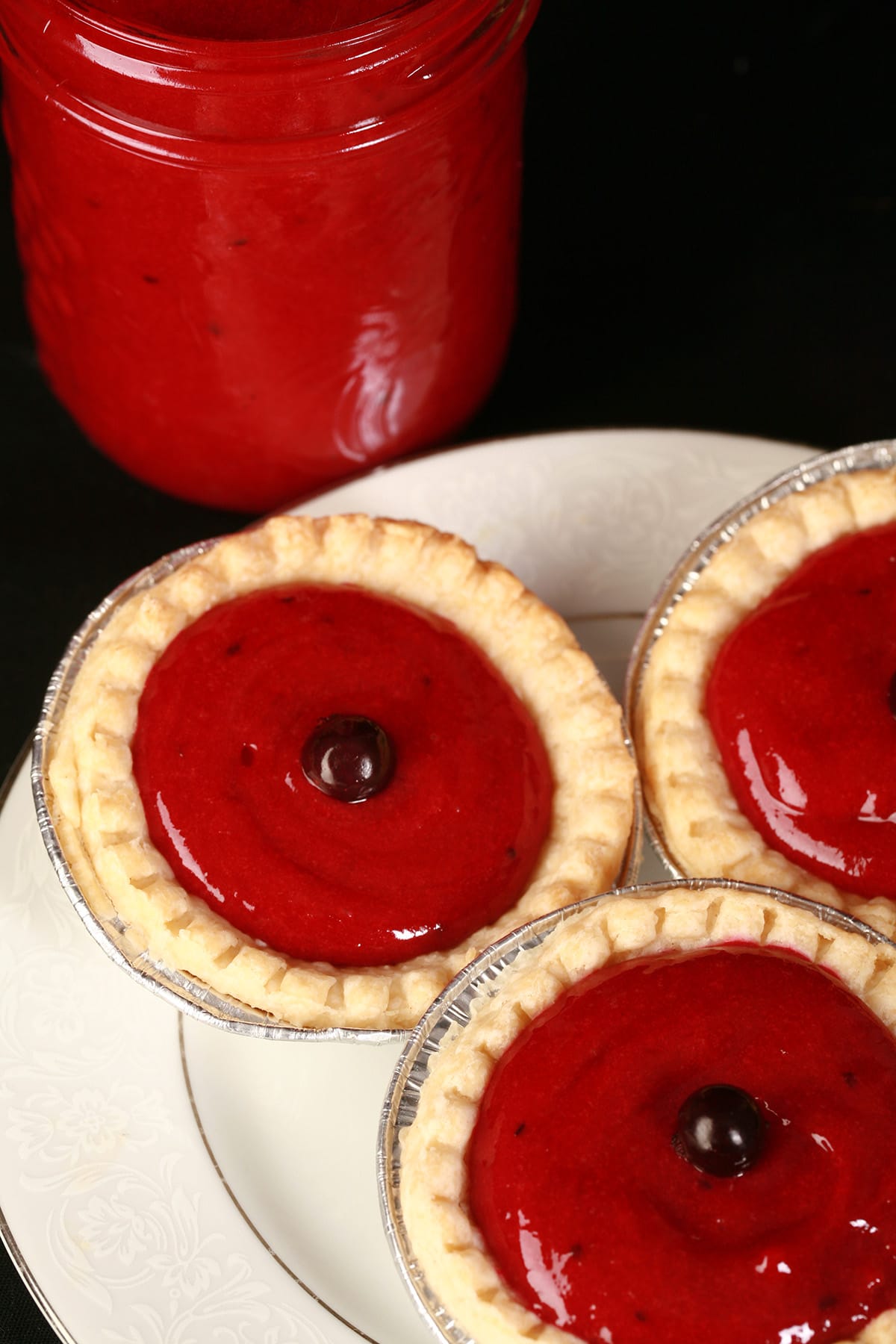
Tips for Making Blackcurrant Curd
Blackcurrant Curd Ingredients
Most of the ingredients are super simple: blackcurrants, sugar, eggs, and butter.
You can use fresh or frozen blackcurrants for this. We’re lucky: there’s a nearby U-pick farm with blackcurrants, and a fantastic Eastern European grocery store that stocks frozen blackcurrants, year round!
Use basic white granulated sugar for the best taste.
Also, for the best shelf life, use nice fresh eggs.
One last ingredient, the one that’s key to making a great blackcurrant curd?
Citric acid.
We initially started buying citric acid for use with our Homebrewed Ciders and Wines (along with Acid Blend), but over the years, we've been using it a lot more in our kitchen.
You can find it used in such things like my replica Beep Drink, as part of the fun rim on my Fuzzy Peach Candy Cocktail, and as part of my Wine Slush Mix - always a favourite for gifting!
Citric acid is the “secret” ingredient to providing enough acid for the curd to set up, without diluting the flavour of the curd.
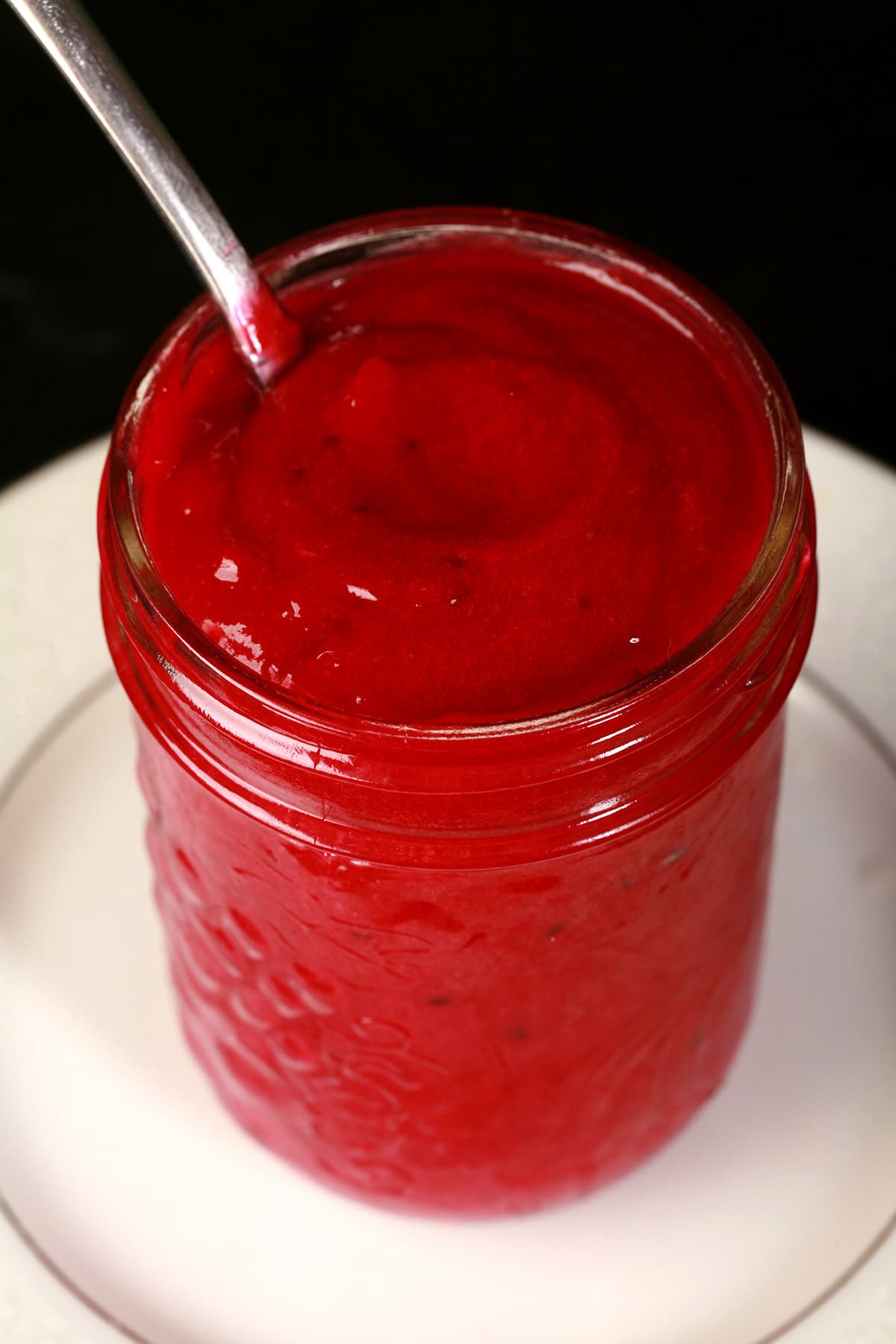
Blackcurrant Curd Equipment
You don’t need a ton of equipment to make curd, but each piece you do need is important. Here’s the rundown:
After cooking the blackcurrants, you’ll want to press them through a Fine Mesh Wire Strainer.
This gets all the bits of skin out of the blackcurrant pulp, allowing for a nice smooth final product.
I tend to stir/scrape the mixture against the wire, with a silicone spatula.
Heavy Bottomed Pot OR Double Boiler
Personally, I prefer using a heavy bottomed pot, but a double boiler is the traditional way to do this... more on that in a bit!
A Silicone Whisk
Yes, wire whisks are great in general... but they can react with the acid in your blackcurrant curd, and make it taste metallic.
I like to avoid that whole thing, and just use a silicone whisk.
When making curd, I use the smallest whisk in my Set of 3 Silicone Whisks.
I just find that the smaller one is best to keep everything moving, and prevent clumps.
That said, any brand of silicone whisk should do just fine.
A Thermometer
For both proper thickening AND food safety reasons, I like to use a thermometer when making fruit curds.
You can use any thermometer that will accurate read a temperature of 165 F.
Personally, I like to use a Infrared Cooking Thermometer. It's quick, easy, and no-mess!
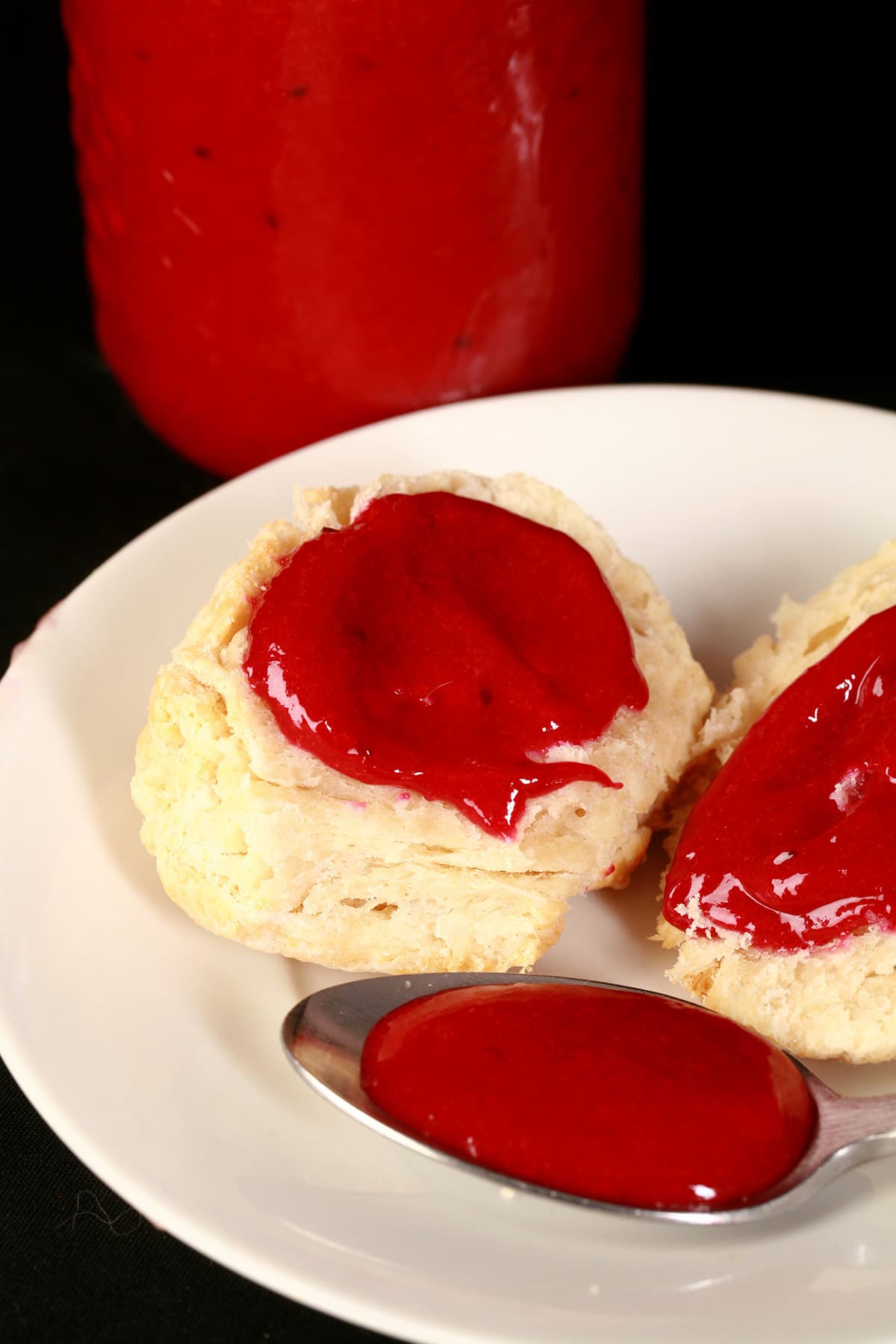
Cooking Technique
While you’re “supposed” to cook this over a double boiler - and I did in the photos - I’ll be honest... I never do.
I like to cook my blackcurrant curd over low, direct heat. I whisk it constantly, and it’s ready in just minutes - so much less fussy.
If you’re not cooking it over higher heat and you keep an eye on it / keep whisking, you’re not going to end up with clumps.
I like to use a heavy bottomed pot, for the best heat distribution.
You’ll find that when you start out, there will be a lot of foaming. As you approach the right temperature, that foaming will subside - that’s when you should really start keeping an eye on the temperature, to avoid overcooking it.
Finally, just know that the curd will thicken more as it cools, so don’t be so worried if it’s not as thick as you’d like.
If you followed the recipe, did the spoon trick (more on that later), and your curd reached 165F, it’ll thicken!
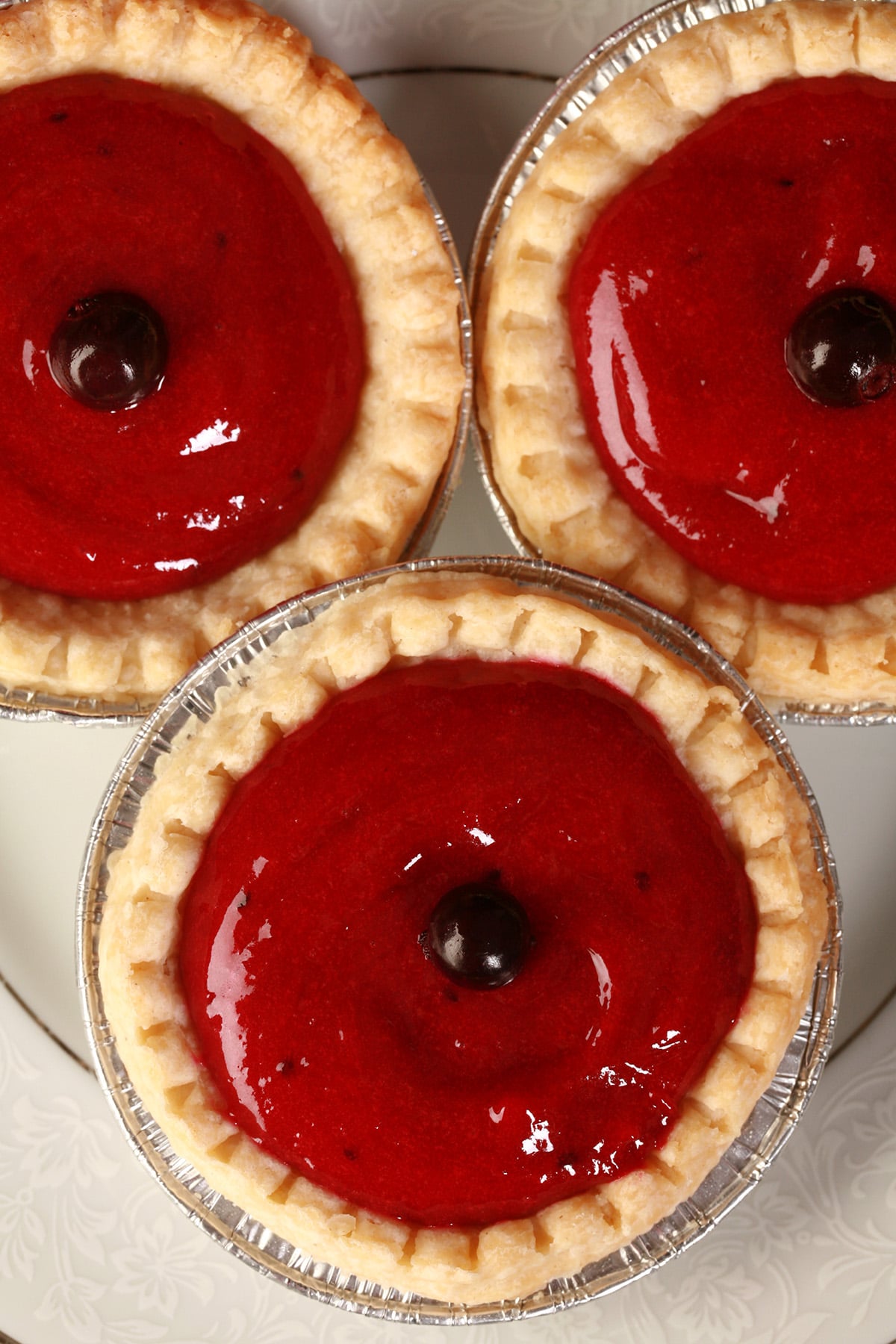
How Long Does Blackcurrant Curd Last?
Depending on who you ask, homemade blackcurrant curd will last up to a month or two in the fridge. (ALWAYS refrigerate your curd!)
Personally, I find it’s best to use it up within 2 weeks, for the best flavour.
Can I Freeze Blackcurrant Curd?
Yes! It’ll keep for about 6 months in the freezer, and you can freeze it right in a canning jar.
Freeze your curd as fresh as possible - ie, don’t wait til it’s about to go bad.
When you want to use it, let it defrost in the fridge for a day or two before use.
Once the blackcurrant curd is thawed, you’ll want to use it within a week or two.
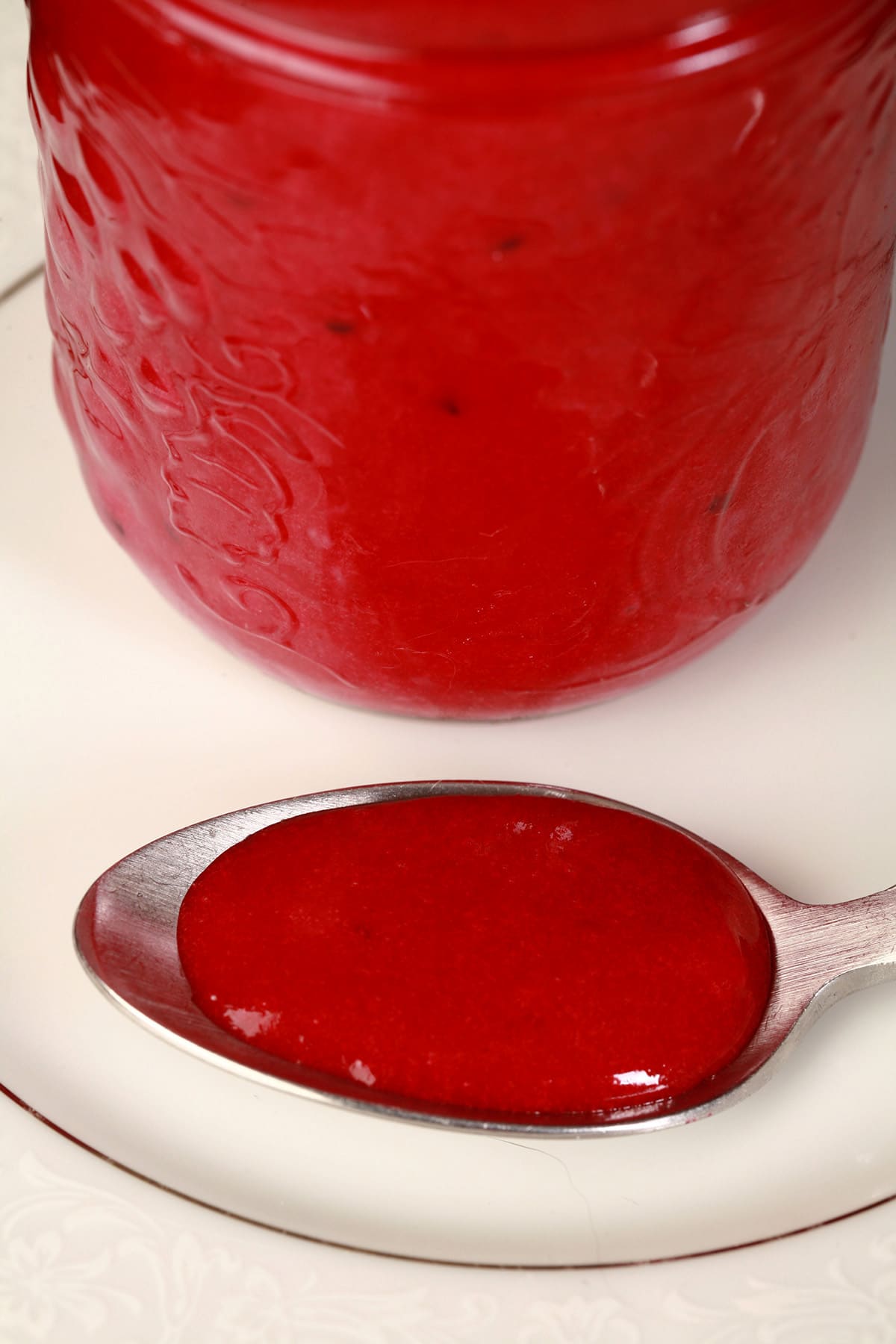
How to Make Blackcurrant Curd
Full recipe follows, but let's start with the pictorial overview!
In a small pot, heat blackcurrants and water. Simmer for 2 minutes, mashing as it cooks.
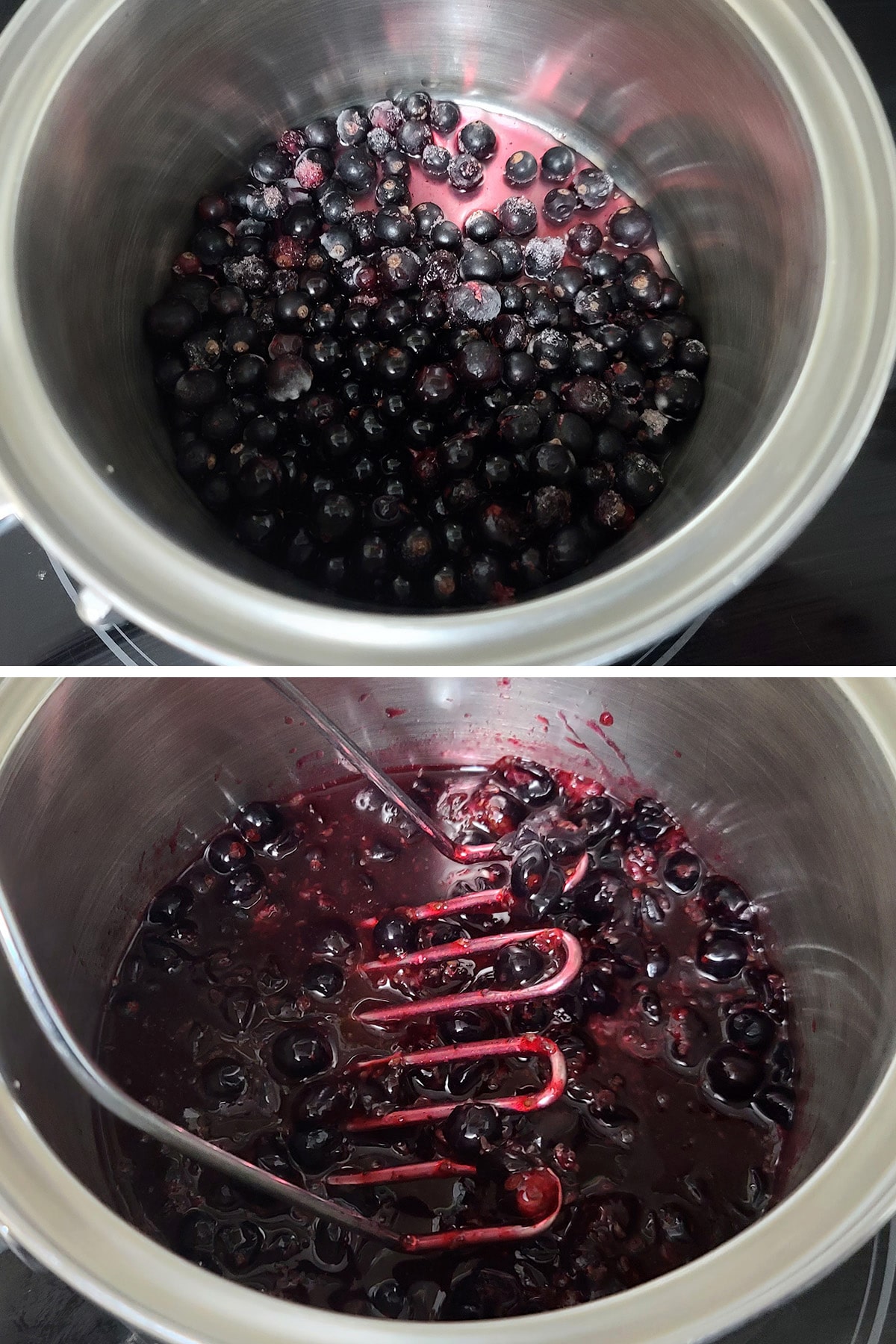
Press blackcurrant pulp through a wire strainer, discarding the solids left behind. Set pulp aside.

In a small pot, whisk together egg yolks, large egg, and sugar until well combined.

Add the blackcurrant pulp and the citric acid, whisk until well combined.

Cook over medium heat, whisking constantly, until mixture thickens. It should be able to coat the back of a spoon and retain a clear trail when a finger is dragged across the back of the spoon.
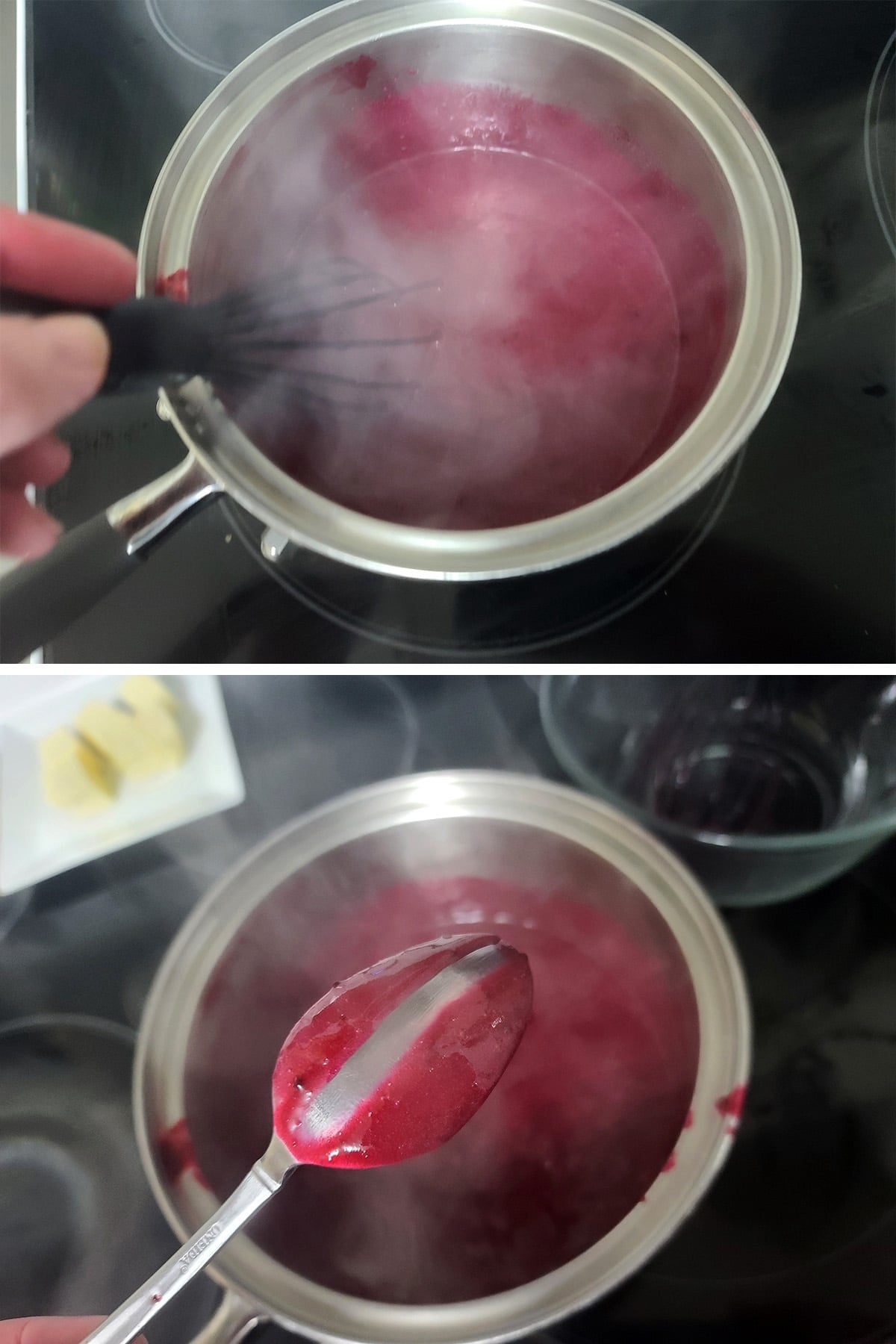
Ideally, you want the mixture to reach 165F - I use an infrared surface thermometer for this.
Once the mixture is thick/hot enough, transfer to a bowl. Add the pieces of butter, whisking until well incorporated.

Once all of the butter has melted in and been fully incorporated into the curd, transfer blackcurrant curd to your storage container and chill for at least 1 hour before use.

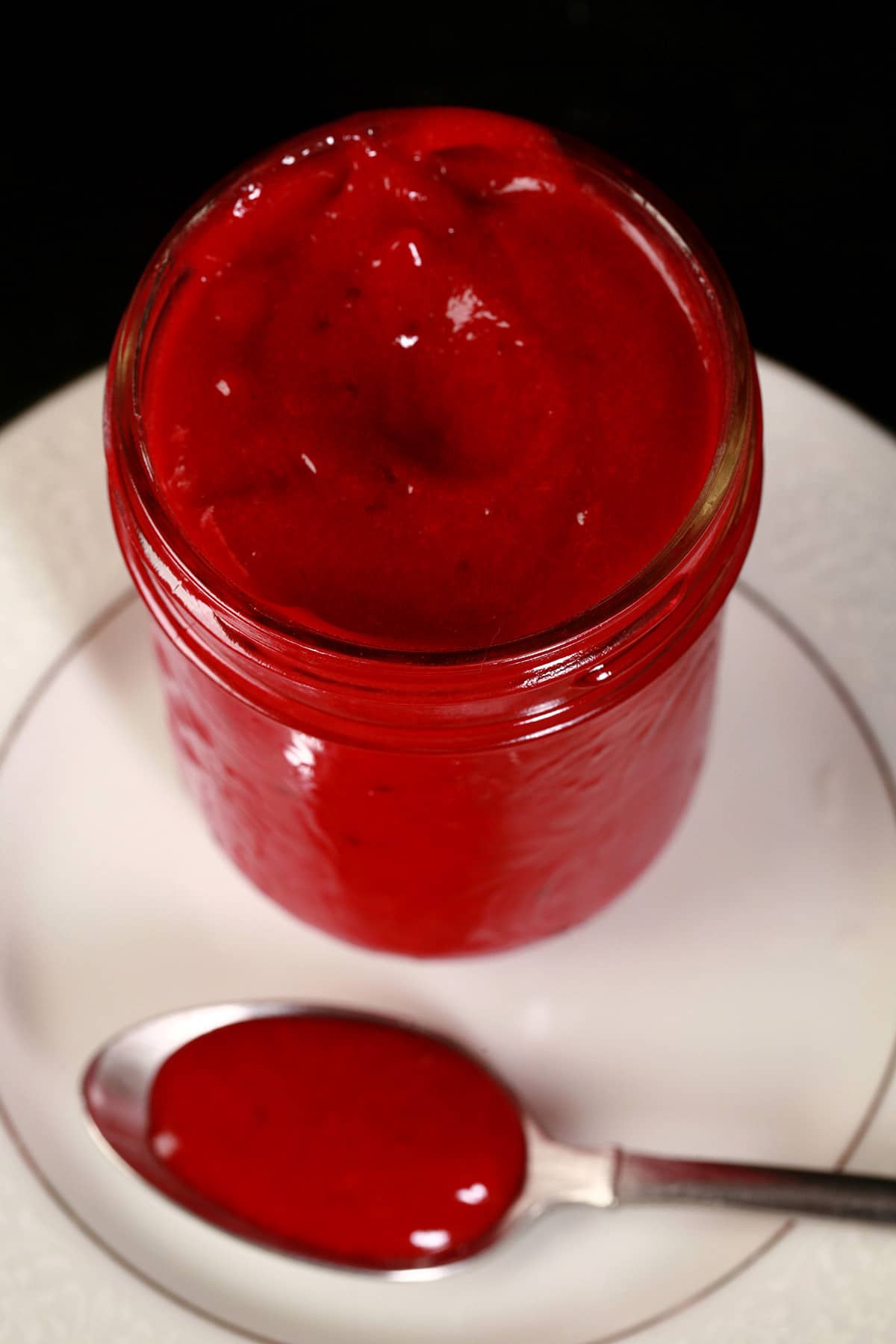
More Fruit Curd Recipes
Looking for more fun fruit curd recipes to dress up your breakfasts, brunches, or desserts? I've got you covered!
Blueberry Curd
Cranberry Curd
Grape Curd
Grapefruit Curd
Kiwi Curd
Lemon Curd
Lime Curd
Low Carb Lemon Curd
Mango Curd
Orange Curd
Passionfruit Curd
Raspberry Curd
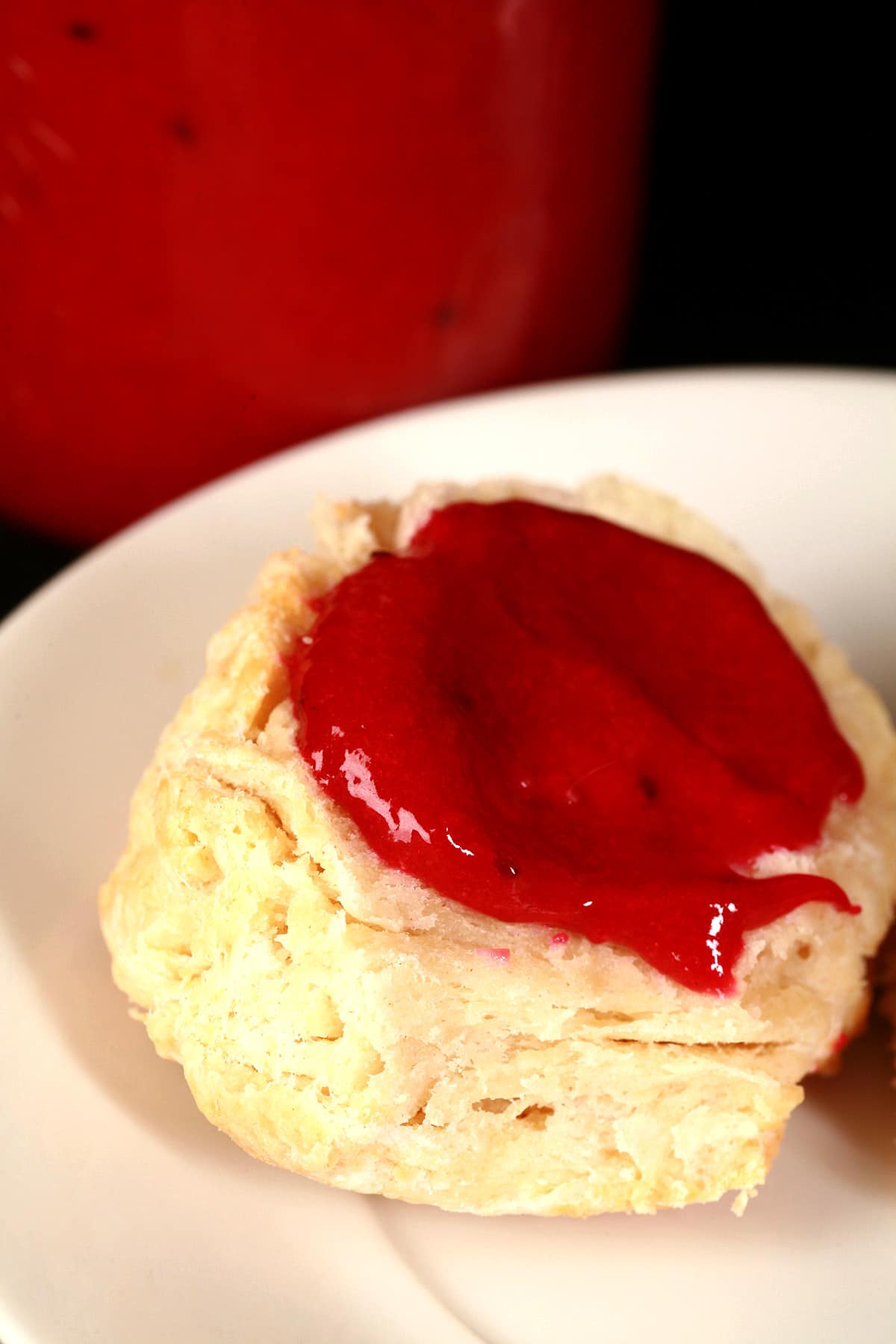
Share the Love!
Before you chow down, be sure to take some pics of your handiwork! If you post it to Bluesky, be sure to tag us - @CelebrationGen. We're also on Pinterest, so you can save all your favourite recipes to a board!
Also, be sure to subscribe to my free monthly email newsletter, so you never miss out on any of my nonsense.
Well, the published nonsense, anyway!

Blackcurrant Curd
Equipment
- Wire Mesh Strainer
- Silicone Whisk
- Infrared Surface Thermometer
Ingredients
- 1 ½ cups Blackcurrants Fresh or frozen & thawed
- ¼ cup Water
- ¾ cup Granulated Sugar
- 3 Large Egg Yolks
- 1 Large Egg
- 1 teaspoon Citric Acid
- 6 tablespoon Salted Butter Chilled and cut into pieces.
Instructions
- In a small pot, heat blackcurrants and water. Simmer for 2 minutes, mashing as it cooks.
- Press blackcurrant pulp through a wire strainer, discarding the solids left behind. Set pulp aside.
- In a small pot, whisk together egg yolks, large egg, and sugar until well combined. Add the blackcurrant pulp and the citric acid, whisk until well combined.
- Cook over medium heat, whisking constantly, until mixture thickens. It should be able to coat the back of a spoon and retain a clear trail when a finger is dragged across the back of the spoon. Ideally, you want the mixture to reach 165F - I use an infrared surface thermometer for this.
- Once mixture is thick / hot enough, transfer to a bowl. Add the pieces of butter, whisking until well incorporated.
- Once all of the butter has melted in and been fully incorporated into the curd, transfer blackcurrant curd to your storage container and chill for at least 1 hour before use.
Notes
Nutrition
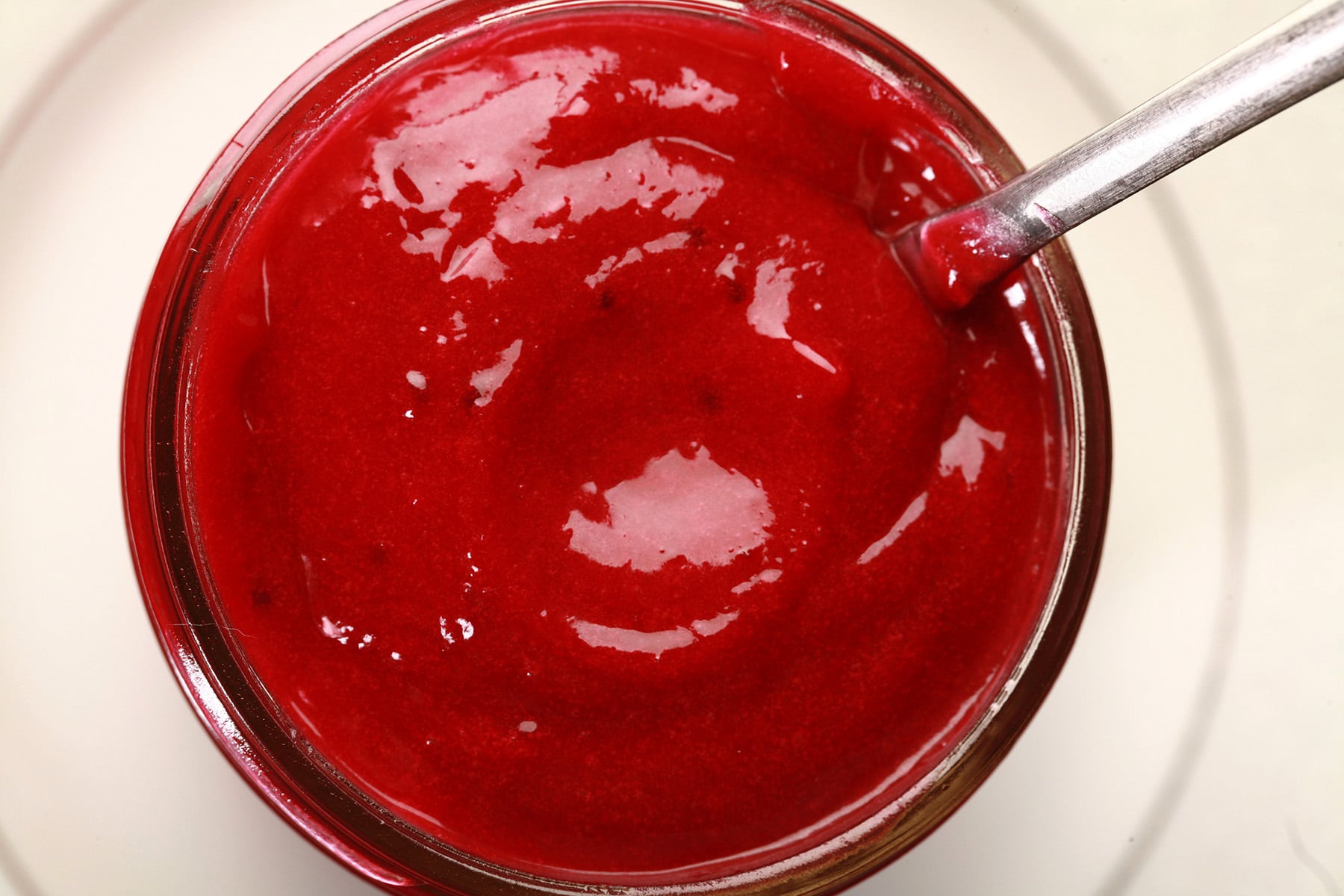


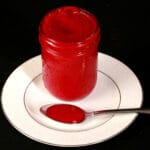
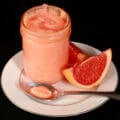


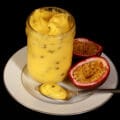
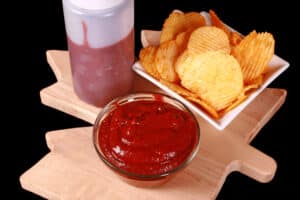

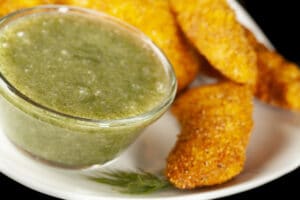

Julie
The reason you can’t find blackcurrant in the United States, is not because we don’t like them! It’s Because it’s actually illegal to grow them here. Blackcurrants apparently carried some kind of fungus that at one point almost destroyed the pine and logging industry in the United States, so the government made it illegal to grow them, or bring their seeds of the country!